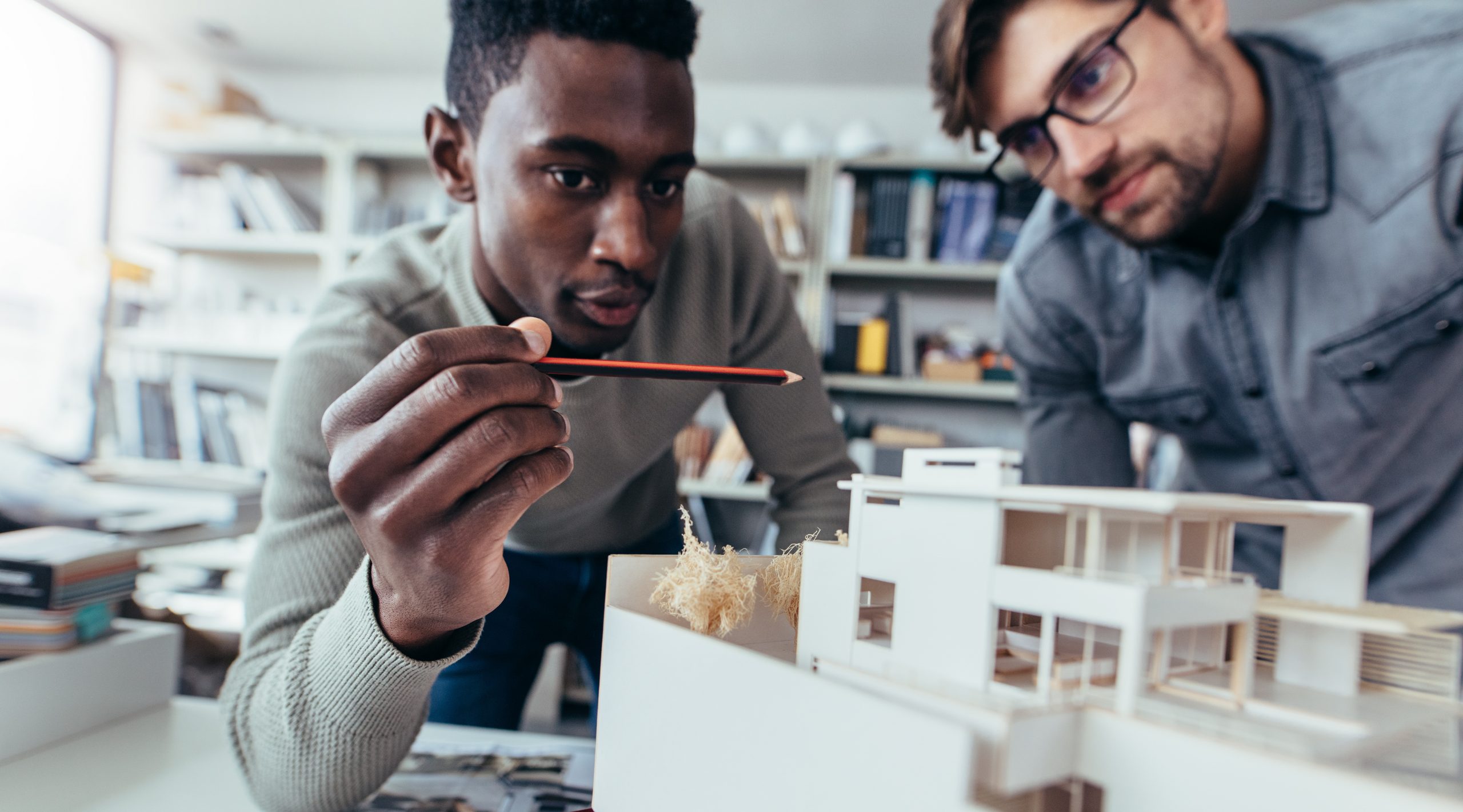Understanding the Diverse Career Paths Available for Aspiring Architect
As an ambitious Architect, you have a world of profession paths waiting for you. Each course supplies one-of-a-kind difficulties and opportunities to apply your creativity and technological expertise. Whether you're drawn to standard architecture or the nuances of lasting layout, there's a niche that straightens with your passions. Recognizing these varied alternatives can form your expert trip, however which direction will you select to check out initially?
Typical Design: Creating Structures and Frameworks
Typical style focuses on developing structures and structures that blend capability with visual appeal. Your designs can reflect social heritage, showcasing regional customs while meeting modern needs.
You'll develop skills in drafting, model-making, and website evaluation, permitting you to imagine and interact your ideas efficiently. Engaging with clients, you'll require to understand their vision and equate it into feasible layouts.
Additionally, building codes and sustainability practices are necessary in your job, ensuring your frameworks are ecologically pleasant and safe. As you grow in your occupation, you'll locate chances in household, commercial, and even reconstruction jobs, each offering distinct challenges. Welcoming standard architecture leads the way for a satisfying career that pays homage to the past while shaping the future.
Urban Preparation: Forming Communities and Public Spaces
As a hopeful Architect, you can play a crucial role as a city planner, changing just how areas communicate and operate. By utilizing community involvement methods, you'll assure that residents have a voice in shaping their setting. And also, integrating sustainable layout concepts will certainly aid develop spaces that not only satisfy today's needs yet also safeguard the future.
Role of Urban Planners
While lots of could think about engineers as the single enthusiasts behind structures, urban planners play an important function fit the wider landscape of communities and public spaces. They examine land usage, zoning legislations, and community requires to create sustainable settings that boost lifestyle. By working together with different stakeholders, you'll aid design parks, transportation systems, and household areas that promote social interaction and ease of access. Urban organizers also concentrate on environmental considerations, guaranteeing that advancements incorporate green spaces and support biodiversity. Your proficiency in spatial layout and community characteristics permits you to imagine future development while maintaining cultural heritage. In this important role, you'll straight influence exactly how individuals experience their surroundings, making every project a possibility for favorable adjustment.
Community Involvement Approaches
Effective community engagement approaches are essential for urban organizers to ensure that the voices of homeowners are listened to and valued in the preparation process. To promote significant dialogue, you should focus on open discussion forums and workshops where community members can reveal their ideas and worries. By proactively integrating and listening responses, you'll develop rooms that show the area's requirements, ultimately leading to even more successful and lasting urban atmospheres.
Lasting Layout Concepts
When designing metropolitan areas, integrating sustainable style concepts is critical for creating settings that flourish both ecologically and socially. Take into consideration incorporating environment-friendly rooms, like parks and yards, to enhance biodiversity and boost air quality.
Designing with water conservation in mind is also essential-- assume about rain yards and absorptive surfaces to take care of stormwater. Including area participants throughout the preparation procedure warranties that the areas you produce fulfill their demands and urge social interaction. By accepting these principles, you'll contribute to vibrant, lasting city landscapes that benefit every person.

Landscape Architecture: Creating Sustainable Outdoor Environments
As you check out landscape style, you'll uncover essential style principles that produce beautiful and useful outdoor rooms. Lasting methods play a vital function in guaranteeing these settings flourish while lessening ecological effect. Plus, you'll discover a range of occupation opportunities that enable you to make an actual distinction in exactly how people engage with nature.
Design Principles in Landscape
Recognizing style concepts in landscape style is necessary for developing lasting outside environments that integrate with nature. You'll need to contemplate elements like proportion, balance, and range to guarantee your layouts really feel natural and welcoming. Additionally, pay interest to seasonal changes, creating with products that enhance the surroundings year-round.
Lasting Practices Overview
Sustainable practices in landscape design not only concentrate on visual appeals yet additionally focus on ecological wellness and source preservation. By incorporating native plants, you boost biodiversity and minimize the requirement for chemical fertilizers and pesticides. Implementing reliable irrigation systems helps preserve water and lessens drainage, protecting nearby environments. You can make spaces that promote dirt health, such as using organic materials and practicing permaculture principles. In addition, incorporating eco-friendly framework, like rainfall yards and porous pavements, help in stormwater monitoring and reduces urban heat. You contribute to a much healthier earth and supply spaces that promote community connection when you create outdoor atmospheres with sustainability in mind. Inevitably, these techniques guarantee your designs benefit both people and the setting for years ahead.
Job Opportunities Expedition
With a strong structure in sustainable methods, landscape design uses a variety of profession courses that permit you to make a meaningful effect on the setting. Urban planners frequently team up with landscape designers to develop eco-friendly rooms in city settings, enhancing city livability. If you're passionate about education and learning, think about becoming a landscape design teacher, motivating future generations.
Lasting Design: Focusing on Eco-Friendly Practices
As you explore your job in style, embracing environment-friendly methods can set you apart in a competitive area. Sustainable design concentrates on creating buildings that lessen environmental impact while improving occupant well-being. By including eco-friendly materials, energy-efficient systems, and sustainable structure techniques, you'll contribute to a greener future.
Start by gaining understanding of environment-friendly qualifications like LEED or BREEAM, which can reinforce your credentials. Consider just how all-natural light, ventilation, and thermal effectiveness can optimize design. Collaborate with designers and environmental consultants to introduce solutions that reduce waste and preserve sources.
Don't fail to remember the importance of area participation-- appealing regional stakeholders can influence designs that integrate with the setting. As clients progressively focus on sustainability, your expertise in green techniques will not only bring in jobs however also accomplish your interest for liable style. Accept this important aspect of the career, and view your profession thrive.
Historical Conservation: Securing and Bring Back Cultural Heritage
While you begin on your building trip, consider the essential role of historical conservation in keeping our cultural heritage. This area concentrates on the protection and reconstruction of significant structures, websites, and structures that tell the tales of our past. By taking part in historical conservation, you'll help guard the architectural tradition that shapes area identity.
As a historical preservation Architect, you'll analyze historical importance and evaluate the condition of frameworks. You'll work carefully with historians and guardians to ensure genuine reconstruction methods are employed. This job path this website permits you to mix creativity with research study, allowing you to design solutions that value original products and craftsmanship.
Your work not just contributes Extra resources to sustainability by recycling existing structures but likewise cultivates a sense of pride within neighborhoods. Embracing this path will certainly aid you become a guardian of background, maintaining the tales and looks that enrich our lives.
Interior Design: Enhancing Indoor Spaces
Historical preservation and interior design both share a commitment to improving the constructed environment, yet they concentrate on different aspects. While historic preservation highlights maintaining a framework's historical and social value, indoor architecture nos in on enhancing interior rooms for functionality and looks.
As an aspiring Architect, you'll locate that interior design allows you to blend imagination with technological skills. You'll make rooms that not only look excellent however likewise promote convenience and performance. This area entails comprehending exactly how light, color, and products communicate within an area, affecting mood and usability.
You'll work on various jobs, from property homes to business offices, ensuring that each environment meets the demands of its owners. By prioritizing user experience, you can transform insides into functional and motivating areas, making a significant influence on just how people interact with their surroundings. Embrace the possibility to improve interior environments and form the method people work and live.
Industrial Design: Merging Functionality With Looks
Commercial layout plays a vital function in creating items that effortlessly mix appearances with capability, ensuring that what you use everyday is not just aesthetically enticing yet also functional. As an ambitious Architect, you can engage yourself in this field, concentrating on creating every little thing from furnishings to customer electronics. Your job involves comprehending user requirements, products, and manufacturing processes, allowing you to create ingenious remedies that improve everyday experiences.
In industrial design, you'll frequently team up with manufacturers, designers, and online marketers, making certain that your styles are not just lovely but likewise viable. You'll discover to balance form and function, focusing on use without sacrificing style. By developing your skills in sketching, 3D modeling, and prototyping, you'll be well-appointed to bring your ideas to life. This occupation path offers a dynamic setting where creativity satisfies functionality, making it a satisfying option for designers interested in forming the products of tomorrow.
Regularly Asked Inquiries
What Educational Certifications Do I Need to Become an Engineer?
To end up being a designer, you'll require an expert degree in style, typically a Bachelor's or Master's. Furthermore, you'll have to finish an internship and pass the Architect Enrollment Examination to exercise lawfully.
Are There Accreditation Requirements for Different Building Occupation Paths?
Yes, there're certification demands for numerous architectural courses. Architect. You'll require to pass tests, full internships, and occasionally go after specialized training, depending on your picked emphasis, like landscape architecture, urban layout, or historical conservation
What Software Application Skills Are Important for Architects Today?

Exactly How Can I Gain Practical Experience While Examining Style?
You can get practical experience by interning at architectural companies, joining style competitions, volunteering for neighborhood projects, or teaming up with classmates on real-world projects. These chances boost your abilities and construct useful links in the industry.
What Job Opportunities Exist Outside Traditional Style Firms?
You can discover different work opportunities outside traditional architecture companies, like urban planning, interior decoration, landscape architecture, construction monitoring, genuine estate advancement, or perhaps roles in sustainability consulting. Each deals unique challenges and benefits.
Whether you're drawn to traditional style or the subtleties of lasting design, there's a particular niche that straightens with your rate of interests.When creating metropolitan rooms, including lasting style concepts is important for creating environments that thrive both ecologically and socially.As you explore landscape architecture, you'll find necessary style concepts that produce beautiful and useful exterior areas.Recognizing style concepts in landscape design is necessary for producing lasting exterior atmospheres that balance with nature.In commercial design, you'll typically collaborate with marketing experts, manufacturers, and designers, ensuring that your designs are not just lovely yet likewise feasible.